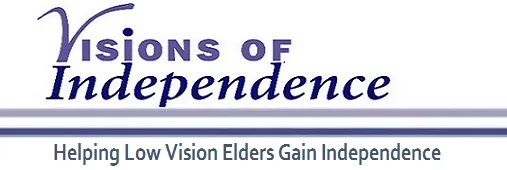How good lighting makes doing tasks easier
One of the simplest and most effective strategies we teach is to increase lighting. Though we teach the concept of increasing lighting, in truth everyone already knows that strategy. Whenever someone wants to have an easier time reading something or determining a color, they bring it over to the light. That same principle applies to low vision patients.
Quite often, remedies are very simple. It is easy to change a light bulb to one with higher wattage to illuminate a dark hallway or stairwell. Simply placing an inexpensive desk lamp on a kitchen counter makes reading recipes and preparing meals much easier. Even in locations where it is difficult to easily increase lighting without electrical work, there are some solutions. Hardware stores sell tap lights ($6.00) that are battery operated. A simple tap on the light turns it on and off. They are easily installed anywhere that can use more lighting. We recommend that our patients install them in closets, pantries and on the wall near stairs heading to a basement. For those times when just a little more light is needed, we recommend that our patients keep a good, small flashlight in their pocket or purse. Patients use them to look at thermostats, insert keys into keyholes or read a stove dial. That little bit of extra light really makes a difference for low vision patients.
A final use for lighting is for landmarking. Simple night lights strategically located makes traveling in hallways in the middle of the night easier and safer. At night those tiny lights can really be seen and help low vision patient orient themselves away from stairs and furniture.
